French is spoken in far more countries than most people realize, with a surprising 29 nations recognizing it as an official language.
When exploring countries that speak French, I discovered that this elegant language extends well beyond the borders of France itself.
In fact, French stands as the fifth most spoken language worldwide, behind only English, Mandarin Chinese, Hindi, and Spanish.
Surprisingly, French is the only language besides English that’s spoken across all five continents.
The global community of French speakers is immense, with approximately 321 million Francophones around the world.
Beyond the official francophone countries, there are actually 88 different states and territories with significant French-speaking populations.
For language learners, French remains incredibly popular, with about 120 million students studying it worldwide as of 2017.
Furthermore, French serves as the language of instruction for 93 million students globally.
Throughout this comprehensive guide, we’ll explore the complete list of French speaking country locations, along with detailed maps to help you visualize their geographic distribution.
Importantly, we’ll examine how the French language is used in each region, from countries where it serves as the sole official language to those where it coexists with other national languages.
Table of Contents
Toggle1. France
At the heart of the French-speaking world stands France itself, the original French speaking country and cultural cornerstone among all francophone countries.
French status in France
French enjoys the prestigious position as the sole official language of France, enshrined in Article 2 of the French Constitution.
The French government is legally required to communicate primarily in French, though private individuals and corporations face no such mandate.
Additionally, commercial advertising must be available in French, although using other languages alongside is permitted.
Notably, a constitutional revision in July 2008 created official recognition for regional languages, acknowledging France’s linguistic diversity.
Population of France
The total population of France has steadily increased over recent years, reaching approximately 68.61 million inhabitants in 2025.
Of this total, around 66.35 million people live in Metropolitan France, while 2.25 million reside in overseas territories.
Consequently, France maintains its position as the fourth most populous country in Europe.
Similar to other Western nations, France faces challenges with an aging population, with projections indicating the median age will reach 43.5 years by 2050.
Nevertheless, France continues to exhibit demographic strength, representing about 0.95 percent of the world’s total population.
Essentially, this means one in every 107 people globally is a resident of France.
French usage in France
French serves as the mother tongue for approximately 87.2% of France’s population, representing around 55.81 million people as of 2007.
While historically only half of France’s population could speak French during the 1789 Revolution, today it is spoken by nearly the entire population.
The country boasts about 63.8 million native French speakers, comprising 94% of its population.
Outside of French, the country harbors remarkable linguistic diversity. Arabic stands as the second most common language in French homes, with several million speakers.
Other significant languages include Occitan (spoken by 3.65% of the population), German dialects (3.15%), and Oïl languages excluding French (3.10%).
Despite this diversity, French remains predominant, with 97% of the population considered Francophone.
2. Democratic Republic of the Congo
The Democratic Republic of the Congo (DRC) stands as the world’s most populous francophone country, surpassing even France itself with its vibrant linguistic landscape.
French status in Democratic Republic of the Congo
French serves as the sole official language of the Democratic Republic of the Congo, a legacy that dates back to the Belgian colonial period.
This status has been maintained since independence primarily because French is widely spoken in Kinshasa, the capital city.
Interestingly, the variety of French used in the DRC shares many similarities with Belgian French due to this historical connection.
Under dictator Mobutu Seko, there was a brief period when Lingala became the official language, yet French remained popular throughout this time.
Subsequently, when Mobutu was forced from power, new leaders restored French as the official language.
Population of Democratic Republic of the Congo
According to current data, the DRC’s population has reached approximately 109 million people in 2025, making it the second most populous country in Africa.
The population growth rate stands at about 3.27% compared to 2024, reflecting the country’s rapidly expanding demographic.
Kinshasa, both the national capital and largest city, serves as the country’s economic center.
The Democratic Republic of Congo’s substantial population contributes significantly to its status among francophone nations.
French usage in Democratic Republic of the Congo
French usage in the DRC is remarkably widespread, with about 55.4 million people (50.69% of the population) speaking French. Moreover, 74% of Congolese use French as a lingua franca, indicating many speak it as a second or third language. In Kinshasa specifically, 68.5% of residents can speak and understand French, while 67% can read and write it.
The country now boasts over 12 million native French speakers. Yet, French coexists with tremendous linguistic diversity—the DRC hosts over 200 languages. Four languages besides French have national language status: Kikongo-Kituba, Lingala, Swahili, and Tshiluba.
The Congolese have developed their own distinct dialect known as Congolese French or Kinshasa French, characterized by a slower rhythm, relaxed pronunciation, and greater emphasis on tone with elongated vowel sounds.
This dialect often mixes with local languages, particularly Lingala, creating unique expressions like “Merci mingi” (thank you very much).
3. Canada
Canada represents a unique example among French-speaking countries, with both English and French enjoying equal official status at the federal level.
French status in Canada
French stands alongside English as one of Canada’s two official languages, with equal status and rights in all federal institutions. This bilingual framework is enshrined in Canada’s Constitution and reinforced through the Official Languages Act, most recently modernized in June 2023.
The Act specifically commits to protecting and promoting French throughout the country, acknowledging its minority situation in North America.
Officially, New Brunswick is the only constitutionally bilingual province, whereas Quebec has adopted the Charter of the French Language, establishing French as its predominant language.
Additionally, in every province and territory, French benefits from legal protections for its use in public institutions.
Population of Canada
Canada’s population has grown steadily, reaching 41.65 million people by Q3 2025. Quebec, the primarily francophone province, accounts for approximately 9.06 million residents.
Currently, French serves as the first official language for 22.0% of Canada’s population, representing about 8.07 million people.
Interestingly, while most native francophones (84.1%) live in Quebec, nearly 1 million reside in other provinces and territories.
French usage in Canada
Across the country, almost 10.7 million Canadians can carry on a conversation in French. Within Quebec, 85.5% of residents speak French at home at least regularly, with 77.5% speaking it predominantly.
Outside Quebec, approximately 2.7 million people (1 in 10) can converse in French. Remarkably, French immersion programs outside Quebec have seen tremendous growth, increasing by 41.3% between 2010 and 2021, with 482,733 students enrolled. Furthermore, the bilingualism rate varies significantly by region—42.8% of French-speaking Quebecers speak English, while 85.0% of francophones outside Quebec speak English.
Overall, the demographic weight of French speakers has been gradually declining nationally from 27.5% in 1971 to 22.0% in 2021.
4. Belgium
Belgium presents a fascinating case among francophone countries, with its complex linguistic landscape reflecting deep historical and cultural divisions.
French status in Belgium
French serves as one of Belgium’s three official languages alongside Dutch and German.
Officially, it functions as the language of the French Community, one of the country’s three constitutional linguistic communities.
Since 2011, this community has adopted the name “Wallonia-Brussels Federation” for communication purposes, though the constitutional name remains unchanged.
In national politics, Belgian politicians can freely choose to speak in any of the three official languages.
The French Community has authority over French speakers in Wallonia and the Brussels-Capital Region, managing education, culture, sports, youth assistance, and scientific research.
Population of Belgium
Belgium’s total population reached 11,825,551 inhabitants as of January 1, 2025, growing by 0.52% (61,901 people) over the previous year.
The population growth primarily results from positive international migration, which offsets the negative natural balance (more deaths than births).
On average, Belgians are 42 years old, an increase from 38 years in 1995.
Currently, 60% (7,099,466 inhabitants) are aged 18-64, while 20.3% (2,405,315 people) are 65 and over.
The country shows clear signs of aging, with the proportion of people aged 80+ growing from 3.8% in 1995 to 5.6% in 2025.
French usage in Belgium
Approximately 40% of Belgium’s population belongs to the French Community, while 59% identify with the Flemish Community and 1% with the German-speaking Community.
The French Community extends over 4.5 million people, including 3.6 million in Wallonia and 900,000 in Brussels (out of 1.2 million inhabitants).
Remarkably, 76% of Belgians could speak French in 2022 according to the Organization Internationale de la Francophonie.
In Brussels, which is officially bilingual, French is spoken as either a primary language (50%) or lingua franca (45%) by almost all inhabitants.
French speakers in Flanders lack official recognition, with estimates of their numbers varying from 120,000 to 300,000.
Several regional languages, including Walloon, Picard, Lorrain, and Champenois, are occasionally spoken informally within the French-language community.
5. Switzerland
Switzerland stands out among French-speaking nations as a multilingual country where French coexists with three other national languages in a carefully balanced linguistic ecosystem.
French status in Switzerland
French holds the position as one of Switzerland’s four national languages alongside German, Italian, and Romansh.
This multilingual framework is officially enshrined in Swiss law, reflecting the country’s commitment to linguistic diversity.
French maintains equal status as an official language at the national level within the federal administration. Historically, French was introduced to Switzerland around the 15th century when the House of Savoy conquered the western part of the country. Initially adopted by the ruling class, French became the language of diplomacy and culture.
The language gained increasing importance in subsequent centuries thanks to growing links between France and Switzerland.
Yet, it wasn’t until 1948 that the Federal state officially adopted French as a national language alongside German and Italian.
Population of Switzerland
Switzerland’s current population reached approximately 8.9 million residents in 2025, showing a 0.6% increase from 2024. Looking forward, projections indicate the population will grow to around 10.5 million by 2055, primarily driven by immigration.
Interestingly, Switzerland’s demographic patterns have fluctuated recently, with a 0.41% decline observed in 2024 after a 1.26% increase in 2023. Currently, Switzerland represents about 0.11 percent of the world’s total population, meaning one in every 882 people globally is a resident of Switzerland.
French usage in Switzerland
French serves as the primary language for approximately 22.8% of Switzerland’s population, representing about 2 million people as of 2020.
The language is predominantly spoken in the western region known as Romandy. Four cantons—Geneva, Vaud, Neuchâtel, and Jura—have French as their sole official language. Furthermore, French shares co-official status with German in three additional cantons: Fribourg, Valais, and Bern. Swiss French closely resembles standard French but includes distinct expressions and vocabulary unique to Switzerland.
Notably, Swiss French speakers use “septante” instead of “soixante-dix” for seventy and “nonante” rather than “quatre-vingt-dix” for ninety.
Similarly, in cantons like Vaud, Valais, and Fribourg, people say “huitante” instead of “quatre-vingts” for eighty.
6. Senegal
Senegal offers a compelling example of linguistic transition among French-speaking nations, where the official language status contrasts sharply with everyday practices on the ground.
French status in Senegal
French remains Senegal’s sole official language, formally inscribed in its 2001 constitution.
This status stems directly from France’s colonial presence in West Africa, where Senegal was long considered the bastion of French language in the region.
The language continues to dominate governmental administration, with all official documents issued exclusively in French.
Presently, the education system operates primarily in French, with the vast majority of schools and all universities conducting courses in the language.
Population of Senegal
Senegal’s population reached approximately 19.7 million inhabitants as of 2025.
The country exhibits steady growth, with a 3.10% population increase (577,640 people) recorded in 2024 compared to the previous year.
Demographically, Senegal maintains a notably young population with a median age of just 18.3 years.
The literacy rate currently stands at 55.7%, with 37% of those over age 9 literate in French.
French usage in Senegal
French speakers comprise only about 25% of Senegal’s population, creating a stark communication divide.
Simultaneously, Wolof has emerged as the dominant language, understood by at least 90% of the population (over 12 million speakers) compared to roughly 4 million French speakers.
Indeed, Wolof has steadily gained ground beyond street conversations, increasingly appearing in government offices, university corridors, and mainstream media.
Currently, more billboards feature Wolof, some Senegalese authors publish books in Wolof instead of French, and radio stations attract millions with Wolof programming.
Formerly, speaking Wolof carried stigma, but attitudes have shifted dramatically as even the president regularly delivers speeches in both languages.
7. Ivory Coast
Ivory Coast exemplifies how a former French colony has embraced the language as a unifying force amid tremendous linguistic diversity in West Africa.
French status in Ivory Coast
French holds the position as the sole official language in Ivory Coast. The language dominates education, administration, and all official settings.
Television, news, and other media outlets primarily offer services and programs in French. Historically, this status stems from France’s colonial presence beginning in 1893, when Ivory Coast became a French colony. The assimilation policy promoted French language and culture as supposedly superior, encouraging locals to adopt French customs.
Population of Ivory Coast
Ivory Coast’s population reached approximately 31.5 million inhabitants in 2024. The country shows consistent growth, with projections indicating about 32.9 million people by 2025.
This makes it the third most populous country in West Africa. Immigrants constitute roughly one-tenth of the total population. The demographic profile remains relatively young, with about two-fifths under age 15.
French usage in Ivory Coast
Regarding French usage, 57.6% of Abidjan residents over 15 can read and write French, plus another 11% who speak it without writing skills.
French is increasingly viewed as an Ivorian language, with a distinct local variety (Ivorian French) emerging. Certainly, a large majority sees French as essential, especially for government interactions and education.
Meanwhile, about 78 different indigenous languages coexist alongside French, including Baoulé, Dioula, Dan, Anyin, and Cebaara Senufo.
8. Madagascar
Madagascar represents a unique case in the francophone world as an island nation where French remains officially recognized yet faces practical limitations in everyday usage.
French status in Madagascar
Madagascar constitutes the fourth largest island country globally with French and Malagasy as its two official languages.
French gained its official status during Madagascar’s period as a French protectorate (1883) and subsequently as a French colony (1896).
Following independence in 1960, the country maintained French in its official capacity.
Even though the 2007 constitution reaffirmed both French and Malagasy as official languages, French functions more as a de jure official language while Malagasy serves as the de facto official language.
Both languages are used in official government publications, highlighting their dual status.
Population of Madagascar
Madagascar’s current population stands at approximately 32.8 million people as of August 2025.
This represents about 0.40% of the global population, positioning Madagascar as the 49th most populous country worldwide.
The nation maintains a relatively young demographic profile with a median age of just 19.2 years.
Population growth continues at a steady pace, with a 2.43% increase (775,722 people) recorded in 2025.
Only 40.32% of the population resides in urban areas, amounting to roughly 13.2 million urban residents.
French usage in Madagascar
Over 4 million Malagasy people speak French, with approximately 5% considered fully Francophone and another 15.4% partially Francophone.
French primarily serves as a second language spoken mostly by the educated population.
In comparison, roughly 18 million people speak Malagasy versus the 5 million who speak French.
Native French speakers number only around 120,000 according to recent estimates.
The language dominates formal education, with French serving as the medium of instruction in higher grades.
All of Madagascar’s standardized tests are offered exclusively in French.
French remains particularly prevalent in business settings, international organizations, and for numerical communications in larger cities.
Among Malagasies, speaking French is often perceived as a mark of education and higher social status.
9. Cameroon
Cameroon presents a complex linguistic landscape among francophone countries, where French and English coexist as official languages amid growing tensions between these linguistic communities.
French status in Cameroon
French holds official status alongside English in Cameroon, reflecting the nation’s unique colonial history under both French and British rule.
Eight out of Cameroon’s ten regions are primarily francophone, representing approximately 83% of the population.
From the inception of the unified state, French has been established as the language of administration and official communication.
Government institutions, legal proceedings, and public services are primarily conducted in French, creating barriers for English speakers.
Population of Cameroon
Cameroon’s current population stands at approximately 29.97 million people as of August 2025.
The country maintains a steady growth rate of 2.59% annually, adding around 755,593 people each year.
About 59.37% of Cameroonians live in urban areas, totaling roughly 17.74 million urban residents.
The median age in Cameroon is remarkably young at just 18 years.
French usage in Cameroon
Roughly 6.4 million people speak French as their main official language in Cameroon based on the 2005 census.
According to the Organization internationale de la Francophonie, Cameroon’s French speakers numbered around 11 million in 2022.
Only 11.6% of Cameroonians are literate in both French and English, while 28.8% are literate in neither.
Opportunities for higher education in English remain minimal, as a 2020 study found that 80% of university lectures are conducted in French.
10. Haiti
Haiti stands as one of only two sovereign nations in the Americas with French as an official language, creating a linguistic bridge between Caribbean culture and francophone identity.
French status in Haiti
French serves as one of two official languages in Haiti alongside Haitian Creole, both recognized in official legislation.
The language dominates important spheres including official government documents, the education system, and media communications.
French remains the standard written language for administrative purposes in Haiti, reflecting its historical role.
Population of Haiti
Haiti’s population reached 12,009,506 in 2025, showing a modest 1.2% increase from 2024.
The demographic makeup consists of approximately 95% Sub-Saharan African descent, 4% European descent, and a small percentage of multiracial Haitians.
Port-au-Prince, the capital city, houses over 1.2 million residents as the country’s largest urban center.
French usage in Haiti
Ironically, despite its official status, merely 5% of Haitians speak French fluently, primarily the elite and wealthy urban residents.
Haitian Creole, conversely, boasts over 95% fluency among the population, yet paradoxically lacks the prestige of French.
French proficiency often serves as a social marker, with better French generally indicating higher education and affluence.
Most elementary students receive instruction in French, even though both teachers and students typically have low proficiency in the language.
Hence, the language divide reinforces social stratification, as French usage in government and education has historically limited social mobility for most Haitians.
11. Luxembourg
Luxembourg stands as a remarkably multilingual hub in Europe where French thrives alongside other languages, creating a linguistic tapestry unlike any other francophone country.
French status in Luxembourg
French serves as one of three official administrative languages in Luxembourg, alongside German and Luxembourgish.
All legislative acts must be drafted exclusively in French, giving it unique legal authority.
From a legal perspective, French is considered the only authentic language, underscoring its judicial importance.
The language gained prominence following Luxembourg’s founding, when it enjoyed the greatest prestige and preferential use for administrative purposes.
Citizens maintain the right to choose any of the three official languages during legal proceedings.
Population of Luxembourg
Luxembourg’s population reached 681,973 inhabitants on January 1, 2025, reflecting a 1.5% increase from the previous year.
This population growth primarily stems from migration, with 25,725 migrants arriving and 16,444 departing in 2024.
The country recorded 6,459 births and 4,471 deaths during 2024, resulting in a natural balance of 1,988 people.
Foreigners constitute almost half of Luxembourg’s total population, contributing to its remarkable linguistic diversity.
The fertility rate stands at 1.25 children per woman, historically its lowest level.
French usage in Luxembourg
French is spoken by an overwhelming 98% of Luxembourg’s population, making it the most widespread language in the country.
The language functions as Luxembourg’s lingua franca, predominantly used in retail outlets, restaurants, cafés, and everyday situations.
Within the workplace, French remains the most popular communication language across most sectors.
Street signs throughout Luxembourg are primarily written in French.
At home, nonetheless, Luxembourgish prevails as the most popular language (spoken by 57%), followed by French and Portuguese (22% each).
Most residents of Luxembourg City regularly hear French in the streets, as the majority of foreigners are francophones from France and Belgium.
12. Rwanda
Rwanda demonstrates a profound linguistic shift among french speaking countries, where historical ties to the language have been deliberately reshaped by political decisions.
French status in Rwanda
French serves as one of four official languages in Rwanda alongside Kinyarwanda, English, and Swahili.
After independence from Belgium, the 1962 constitution consolidated French and Kinyarwanda as official languages.
President Paul Kagame made English an official language in Rwanda’s 2003 constitution, alongside Kinyarwanda and French.
In 2008, French was replaced by English as the language of education.
The government began conducting official business in English, although laws are still published in all official languages.
Population of Rwanda
Rwanda’s total current population reached 14.74 million in 2025.
The country maintains steady growth with a 2.24% annual increase from 2024.
Rwanda has experienced consistent population expansion, rising from 13.95 million in 2023.
French usage in Rwanda
Only 8.2% of Rwandans aged 15 and over were literate in French by 2022, down from 11.4% in 2012.
Kinyarwanda remains the dominant language with 78.3% literacy.
English literacy has surged to 21.2%.
French began losing ground to English after Rwanda’s 1994 genocide when the Anglophone Tutsi took control.
Nevertheless, French remains the most spoken foreign language in the country with approximately 724,000 speakers as of 2018.
13. Burundi
Burundi sits apart from many francophone countries as a nation where the official status of French exists primarily on paper yet finds limited application in daily life.
French status in Burundi
French enjoyed status as one of two official languages in Burundi until 2014, alongside Kirundi.
The country later added English as its third official language in 2014.
Kirundi remains the sole national language, spoken by the overwhelming majority of citizens.
Remarkably, both the Hutu and Tutsi populations speak Kirundi, creating a linguistic homogeneity rarely seen in sub-Saharan Africa.
Population of Burundi
Burundi’s population reached 13,948,140 in 2025, showing a 2.62% increase from the previous year.
The demographic composition includes approximately 81% Hutu, 18% Tutsi, and fewer than 1% indigenous Twa.
Much of Burundi remains rural, with merely 13.4% of residents living in urban settings.
The country maintains a youthful population with a median age of just 17.6 years.
French usage in Burundi
Just 9% of Burundians can speak French, representing roughly one million speakers.
French primarily serves in education, government communications, and media settings.
At tertiary levels, French functions as the main teaching language in most institutions.
Currently, French faces challenges in media spaces, as the Association of French-speaking Journalists reports widespread mistakes that undermine credibility.
Some media outlets have suspended French-language programs altogether, citing difficulties finding competent speakers.
14. Niger
Niger recently made headlines among french speaking countries by dramatically shifting away from its colonial linguistic heritage in 2025.
French status in Niger
French officially lost its status as Niger’s official language in March 2025, replaced by Hausa through a new refoundation charter signed by junta leader General Abdourahamane Tiani.
French now serves merely as a working language alongside English, formally downgraded after decades as the dominant administrative tongue.
This linguistic revolution accompanied Niger’s exit from the Organization Internationale de la Francophonie, further distancing the country from its former colonial power.
The proclamation deliberately strengthens the junta’s control, officially appointing General Tiani as President for a 60-month transition period.
Population of Niger
Niger’s population reached approximately 28 million inhabitants by mid-2025.
The country maintains one of Africa’s highest growth rates at 3.28% annually.
Remarkably, Niger possesses an extremely young population with a median age of just 15.6 years.
Only 18.15% of Nigeriens live in urban areas, totaling roughly 5 million urban residents.
French usage in Niger
French literacy remains limited to about 20% of Nigeriens, yet reaches 47% in urban areas.
Hausa dominates as the most widely spoken language, used by approximately 55.4% of the population (14.5 million people).
Historically, French functioned as the language of official administration, media, and business despite limited popular usage.
Currently, Niger recognizes ten national languages beyond Hausa, including Zarma (spoken by 3.59 million), Fulfulde, Tamasheq, and Kanuri.
15. Vanuatu
Vanuatu boasts the world’s highest linguistic density per capita, creating a unique multilingual environment where French maintains an official position alongside English and Bislama.
French status in Vanuatu
French serves as one of three official languages in Vanuatu, alongside English and Bislama, an English-based creole language.
This linguistic arrangement stems from Vanuatu’s unique history as an Anglo-French condominium called the New Hebrides until independence in 1980.
Vanuatu maintains active membership in the Organization Internationale de la Francophonie, underscoring its continued ties to the francophone world.
Population of Vanuatu
Vanuatu’s total population reached 350,202 inhabitants in 2025, marking a 2.3% increase from the previous year.
The country maintains a relatively young demographic profile with a median age of just 20.3 years.
Merely 25.4% of Vanuatu’s population resides in urban areas, representing approximately 85,244 people.
French usage in Vanuatu
French is spoken by approximately 35% of Vanuatu’s population, yet only 1% (about 1,800 people) speak it as their first language.
Additionally, 29% (around 87,000 people) use French as a second language.
Interestingly, 63.2% of Vanuatu’s population speak one of the country’s 138 indigenous Oceanic languages as their first language.
Historically, French settlers outnumbered British nearly two-to-one (401 to 228) by 1906.
Currently, an unofficial separation line exists between regions where French or English are taught in schools.
The Alliance Française actively promotes French through media libraries, cultural programs, and language courses.
16. Equatorial Guinea
Equatorial Guinea stands as a unique addition to the francophone world, having adopted French as an official language in 1988 despite its Spanish colonial heritage.
French status in Equatorial Guinea
French enjoys official language status in Equatorial Guinea alongside Spanish and Portuguese.
The country made French an official language in 1997 according to diplomatic records. This linguistic decision emerged primarily as an economic and political strategy to build stronger relationships with neighboring francophone countries. Equatorial Guinea actively participates in La Francophonie networks, which has strengthened its diplomatic connections internationally.
The French Embassy in Malabo maintains several cultural cooperation bodies, including the Institut Français and the Leopold Sedar Senghor “Maison de la Francophonie” in Bata.
Population of Equatorial Guinea
Equatorial Guinea’s current population reached approximately 1,943,851 inhabitants as of August 2025.
The country shows steady growth with a 2.43% annual increase, adding about 45,915 people yearly. Interestingly, 63.57% of residents live in urban areas, totaling roughly 1,232,213 urban dwellers.
The Fang constitute the dominant ethnic group, representing over 85% of the population, while the indigenous Bubi people account for approximately 6.5%. The median age remains relatively young at just 20.9 years.
French usage in Equatorial Guinea
French speakers represent approximately 433,000 people, constituting about 29% of Equatorial Guinea’s population. Yet, other estimates suggest French is spoken by less than 10% of residents.
French typically serves as a compulsory subject in schools, though it’s taught in Spanish at junior levels.
The language is gradually gaining prominence as immigrants arrive from Cameroon, Gabon, and other West African countries. French is utilized primarily in diplomatic contexts and taught particularly in urban areas.
Conclusion
Throughout this comprehensive exploration of French-speaking countries, I’ve revealed the remarkable global reach of this elegant language.
French truly stands as a unique linguistic bridge connecting diverse cultures across five continents, from European nations like France and Belgium to African countries such as Senegal and the Democratic Republic of Congo.
Undoubtedly, the status of French varies significantly among these 74 nations – serving as the sole official language in some while coexisting alongside other languages in others.
Additionally, the percentage of French speakers within each population differs greatly, ranging from France’s 97% to Haiti’s mere 5%, despite its official status.
French consequently continues to thrive as the fifth most spoken language worldwide with approximately 321 million speakers.
Furthermore, its influence extends far beyond these numbers through education, with about 120 million students studying French globally.
Several key patterns emerged during our examination.
First, colonial history has profoundly shaped the geographic distribution of French speakers, particularly across Africa.
Second, local varieties of French have developed distinctive characteristics in many regions, from Canadian French to Congolese French. Last but not least, political decisions can dramatically impact language status, as demonstrated by Rwanda’s pivot toward English and Niger’s recent rejection of French as its official language.
French nevertheless maintains its prestigious position in international diplomacy, business, and culture despite these challenges.
The language’s ability to adapt and integrate into diverse societies while retaining its core identity speaks to its remarkable resilience.
After examining these francophone nations, I’ve discovered that French isn’t merely a language but rather a living testament to historical connections, cultural exchanges, and ongoing evolution in our increasingly interconnected world.





